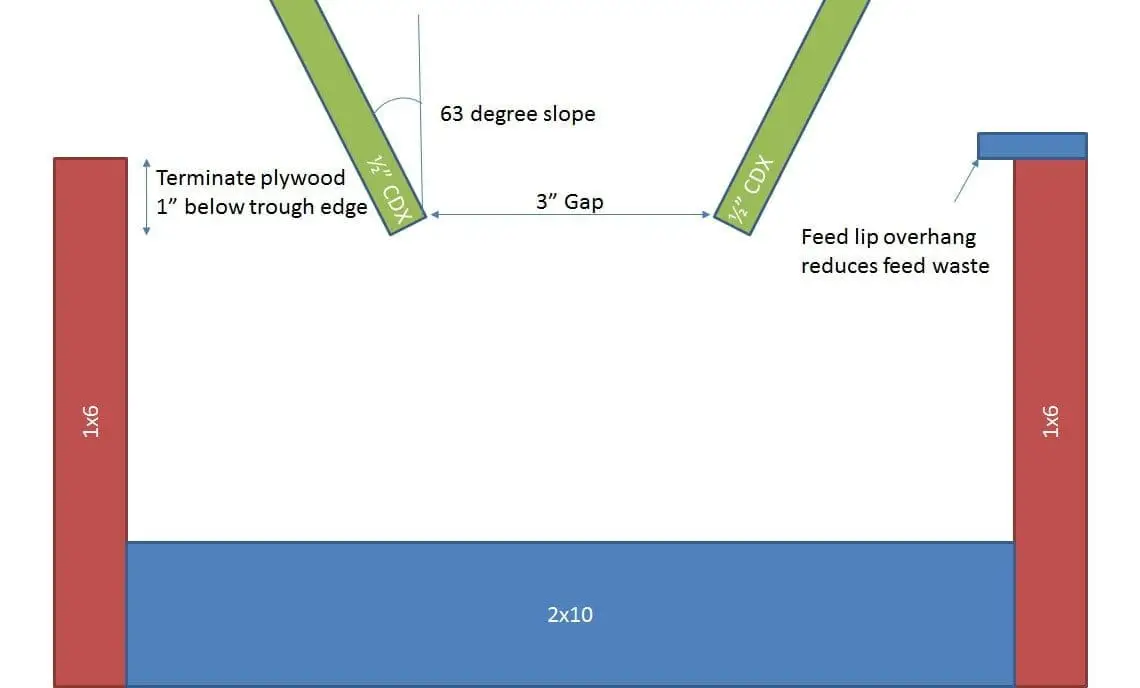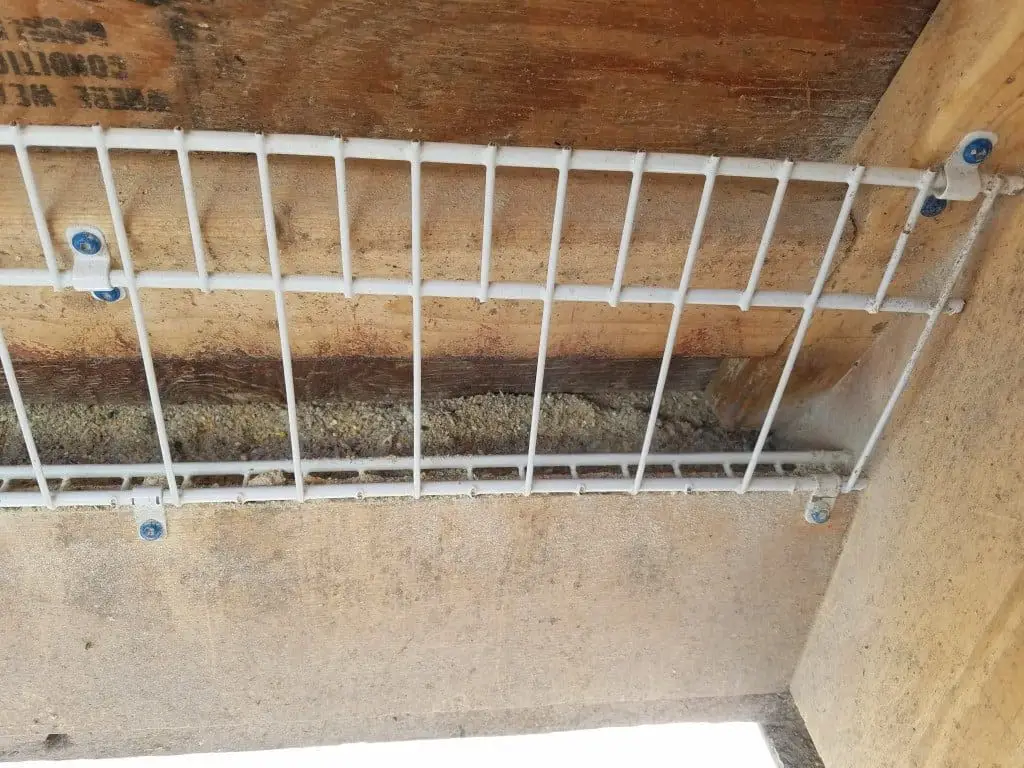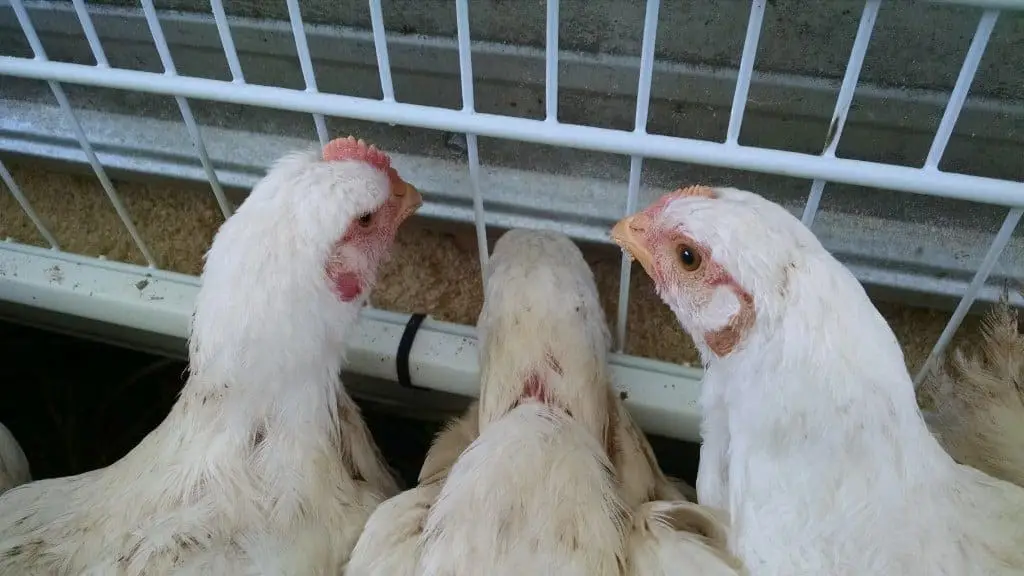I’ve received several requests for details on my chicken feeders, so since I’m getting ready to build a few more I took the time to make some measurements.
Please don’t consider anything I write here to be an absolute requirement. These are just my observations. There are a lot of ways to build a good chicken feeder. And there are even more ways to build a terrible feeder.
Below I diagram the cross-section of the business end of my layer hen feeder.

None of these dimensions are critical, but all of them work well together. My experience after building (and buying) several frustrating feeders indicates that:
- Steep slopes are better. If you are using pelleted feeds or shell corn you might be able to get away with 45 degree angles, but I think that 60 degrees is about the minimum slope.
- Keep a pretty big gap at the bottom of the slope. Inevitably some feed will get clumpy, so I want to minimize bridging and plugging.
- Terminate the hopper at least 1 inch below the bottom of the tray’s lip. If the hopper is close to bottoming out in the tray, it will clog. If it is flush with the lip, it will probably spill feed too easily.
- Provide some sort of lip on the tray. Chickens will pull feed out as they withdraw their heads. I used to use plain wood or PVC trays and the feed waste was obscene until I arrived at this solution. On my broiler feeders I use rain gutters as the bottom tray, since the K-gutter has a nice integral lip. In this case I’m using the L-shaped bend on prefab wire shelving, which provides a dual purpose (see #5 below).
- Grille the chicken! The wire shelving material has been cut to allow 2″ spaces in the feeder. Because the chickens can stick their heads through the grille they can easily access the feed, but they can’t side-swipe it out or reach in with their claws to rake it out.
- Place the feeder above the ground on a platform, suspended by chains, or on a trailer. Provide room for the chickens to scoot underneath to clean up any spilled feed. All feeders are subject to the depredations of rats and mice, but ground level feeders are terrible. I have found that even with frequent moves, my old skidded feeders would always show signs of rodent tunneling whenever I moved them.


